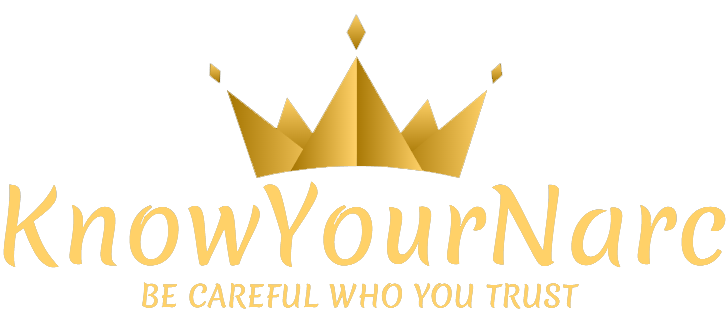In the complex and often painful landscape of toxic relationships, certain patterns emerge that can slip under the radar, making it difficult to fully grasp the nature of the dysfunction. One such pattern is triangulation—a subtle but powerful dynamic that fuels misunderstanding, manipulation, and emotional turmoil. Understanding triangulation is essential for anyone seeking clarity and healing in toxic relationships, whether in romantic partnerships, family ties, or workplace environments. This article delves into the concept of triangulation, unpacking its mechanics and revealing why recognizing this behavior is a crucial step toward breaking free from unhealthy cycles.
Table of Contents
- Recognizing Triangulation Patterns in Toxic Relationships
- The Psychological Impact of Triangulation on All Parties Involved
- Strategies to Break the Cycle of Triangulation for Healthier Interactions
- Building Boundaries and Communication Skills to Prevent Triangulation
- Concluding Remarks
Recognizing Triangulation Patterns in Toxic Relationships
In many toxic dynamics, there exists a subtle but destructive mechanism where conflict or communication is redirected through a third party, instead of being addressed directly between the two individuals involved. This pattern can create confusion, intensify misunderstandings, and erode trust. Look out for signs such as one person consistently involving an outsider to validate their perspective or to bypass confrontation. These behaviors undermine healthy dialogue and foster an environment where blame and manipulation thrive, preventing resolution and emotional growth.
Recognizing these patterns early on is crucial for breaking free from harmful cycles. Common indicators include:
- Indirect communication: Important issues are discussed with a third party rather than directly between the people involved.
- Playing peacemaker: A third person is repeatedly enlisted to mediate or resolve disputes that should be handled within the primary relationship.
- Emotional leverage: Using someone else’s emotional reaction to assert control or guilt within the relationship.
- Creating alliances: Forming “sides” between individuals to manipulate opinions or outcomes.
Understanding and identifying these patterns empowers individuals to seek healthier interactions based on transparency and mutual respect, ultimately disrupting toxic cycles that hinder personal and relational wellbeing.
The Psychological Impact of Triangulation on All Parties Involved
When triangulation infiltrates a relationship, it weaves a complex web of emotional strain that affects each individual profoundly. The targeted party often experiences feelings of confusion, anxiety, and diminished self-worth as they struggle to decipher conflicting narratives and manipulated loyalties. This persistent doubt can lead to chronic stress, eroding mental health and fostering a deep sense of isolation. Meanwhile, the individual acting as the intermediary may grapple with guilt and internal conflict, trapped between competing sides and unable to establish authentic communication.
On the other hand, the person orchestrating the triangulation may momentarily feel a sense of control or power, but this is often accompanied by underlying insecurity and emotional instability. The toxic cycle perpetuates itself through:
- Broken trust between all parties, leading to fractured relationships
- Heightened emotional volatility that destabilizes the family or social unit
- Impaired communication, making resolution and healing more difficult to achieve
Ultimately, the psychological fallout from triangulation can extend beyond the immediate dynamics, leaving lasting scars that hinder healthy relational patterns in the future.
Strategies to Break the Cycle of Triangulation for Healthier Interactions
Breaking free from the grip of triangulation starts with clear, direct communication. When you catch yourself or others slipping into patterns of involving a third party unnecessarily, pause and refocus the conversation. Adopt a habit of addressing concerns openly with the person directly involved, circling back to honesty and transparency. This intentional redirection not only prevents misunderstandings but also builds trust by showing commitment to resolving conflict without side-stepping. Encouraging an environment where feelings and grievances are shared face-to-face discourages gossip and the negative ripple effects that triangulation so often breeds.
Equally important is setting firm emotional boundaries and recognizing your role in the dynamics. It’s crucial to identify whether you are contributing to the cycle by acting as a messenger or mediator unconsciously. Cultivate self-awareness by asking yourself: Am I empowering the direct parties to communicate, or am I fueling the triangle? Support healthier interactions by practicing assertiveness and encouraging others to do the same. Some practical strategies include:
- Politely refusing to relay messages between parties and suggesting direct dialogue instead
- Encouraging accountability by highlighting the benefits of solving issues without third-party interference
- Seeking outside professional support, such as counseling, when dynamics repeatedly derail attempts at direct communication
Building Boundaries and Communication Skills to Prevent Triangulation
Establishing clear and firm boundaries is an essential defense against the confusion and manipulation often caused by triangulation. Boundaries create a framework where respect and transparency can thrive, reducing the space for third-party interference. Start by identifying your personal limits in communication and emotional sharing, then clearly express these boundaries to everyone involved in your relationships. Remember, boundaries aren’t walls to isolate but guardrails designed to protect your well-being and promote healthy interaction.
Effective communication serves as the backbone for preventing toxic dynamics from taking root. Cultivating skills such as active listening, assertiveness, and expressing thoughts without blame significantly reduces misunderstandings that lead to triangulation. Consider incorporating these practices:
- Use “I” statements to own your feelings without placing undue guilt on others.
- Clarify intentions when sensitive topics arise, ensuring all perspectives are heard.
- Address concerns directly with the person involved instead of involving a third party.
By consistently fostering boundaries and communicating with clarity, you transform relationships into spaces of mutual trust, dismantling the power triangulation has over your emotional landscape.
Concluding Remarks
In the complex landscape of toxic relationships, understanding triangulation is crucial. Recognizing this manipulative dynamic not only sheds light on hidden patterns of control and division but also empowers individuals to set healthier boundaries and seek genuine connection. While breaking free from triangulation can be challenging, awareness is the first step toward reclaiming your emotional well-being and fostering relationships built on trust and respect. Remember, no one deserves to be caught in a toxic triangle—choose clarity over confusion, and healing over harm.

